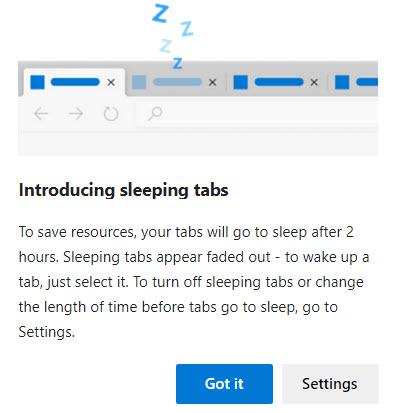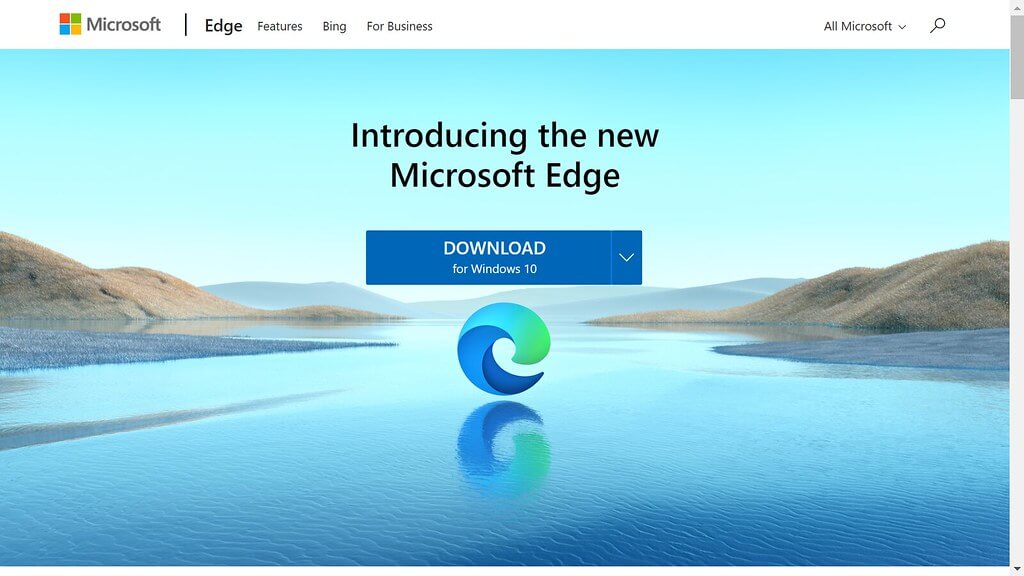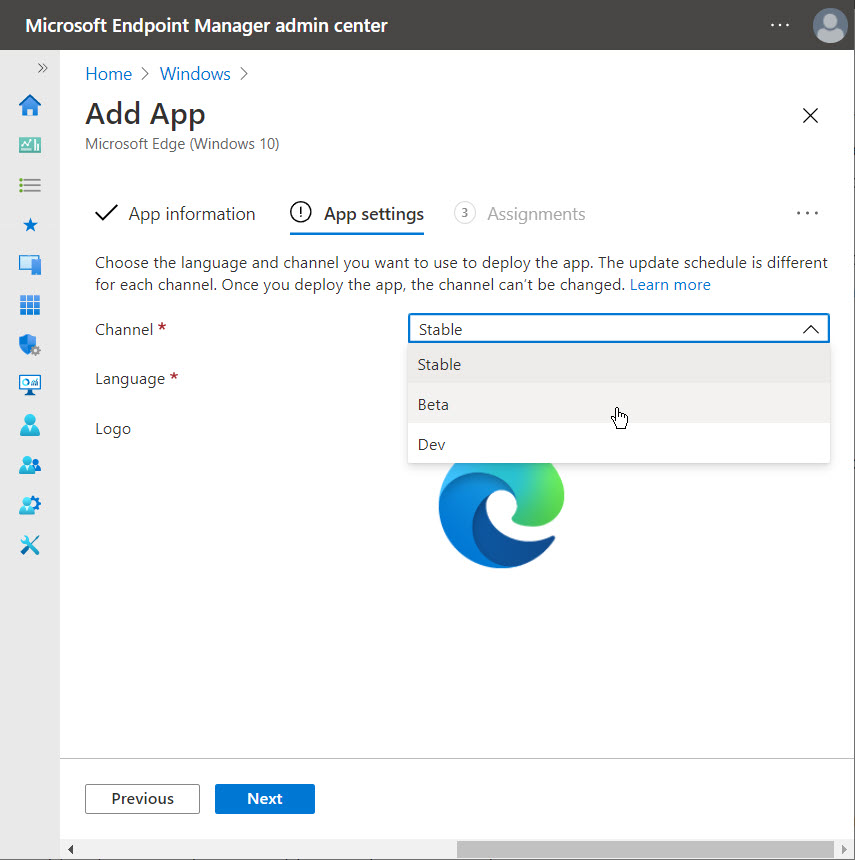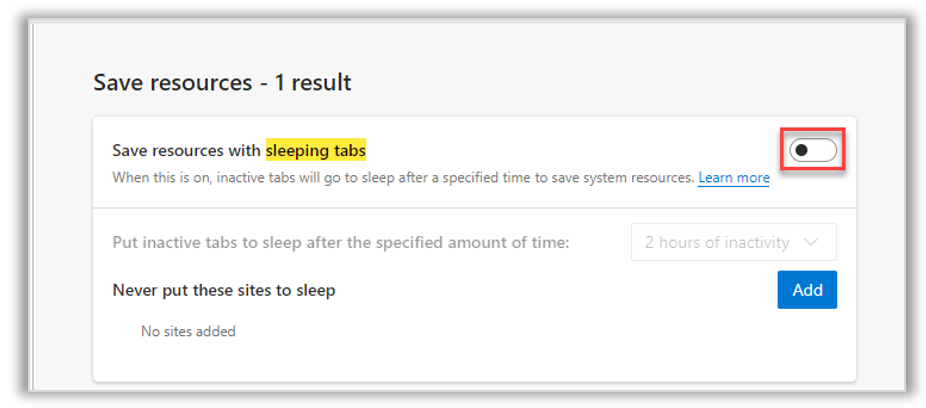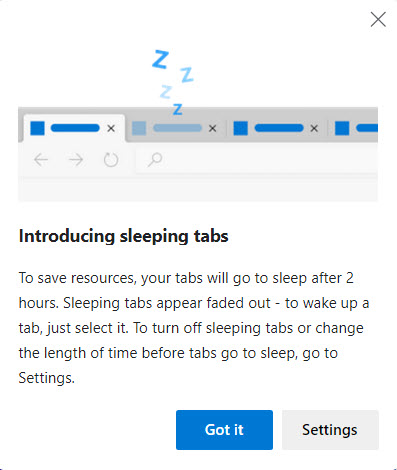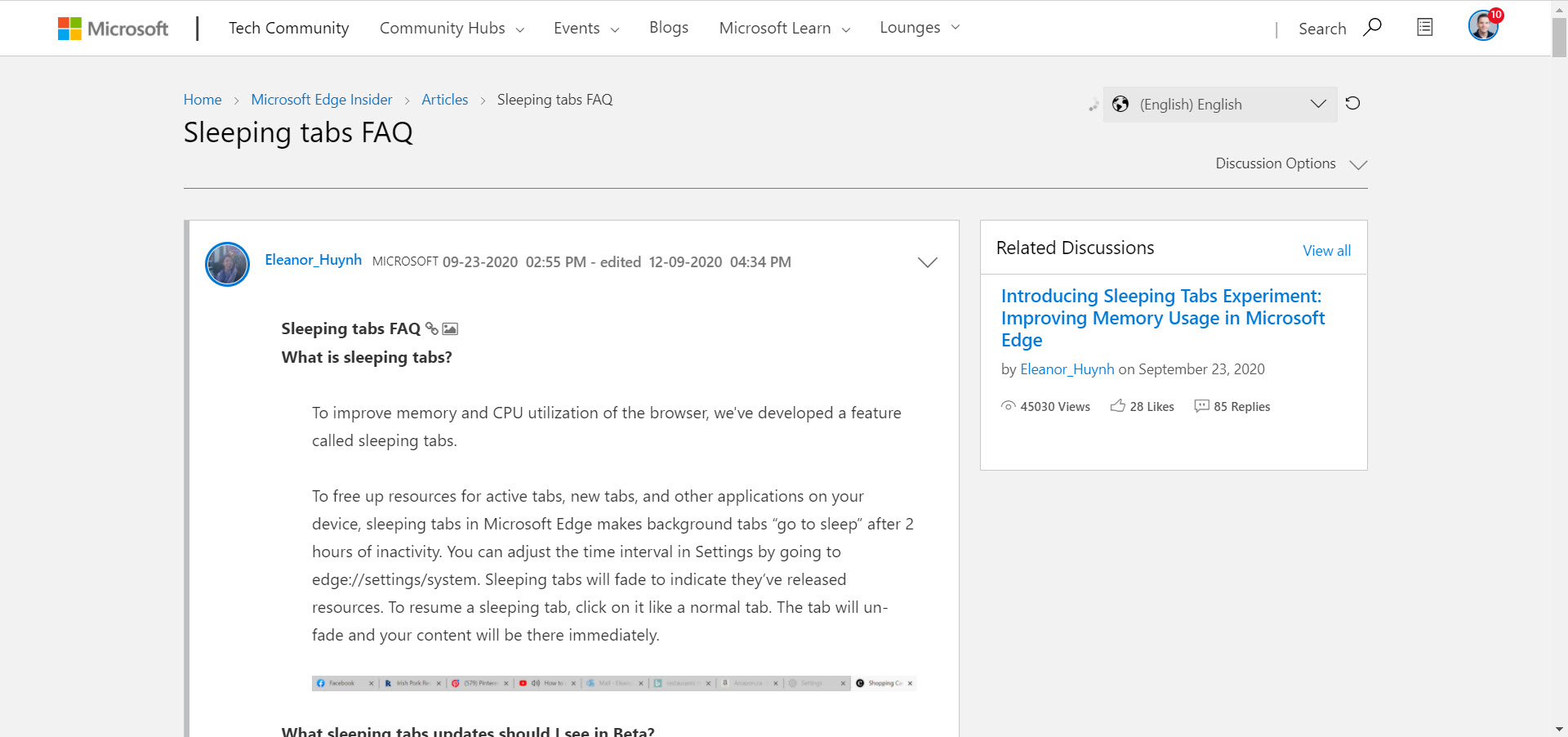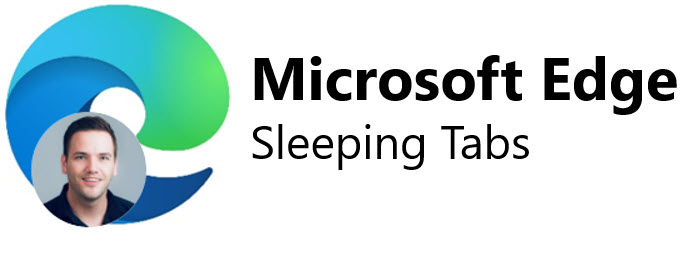
Learn how speed up and reduce CPU and RAM utilization in Microsoft Edge Chromium with Sleeping Tabs and startup boost +more on cloud and physical endpoints environment
I do see more and more companies shifting to Microsoft Edge as a default browser in their virtual environment since the adoption of Chromium as an open-source format. Building and improving a product that has a good baseline is the key to customer success.
The benefits of using Microsoft Edge are as well the further alignment with the different out-of-the-box management capabilities to force default policies with e.g. GPOs or directly via Microsoft Endpoint Manager – Intune.
After posting this message on my social media channels around Sleeping Tabs with all the positive reactions of people shifted to work primarily with Edge, I thought to dedicate a full blog article on this topic. Sleeping Tabs has now officially been released into the stable release cycle! Official announcement Microsoft Edge 88 Privacy and Security Updates – Microsoft Edge Blog (windows.com).
In this blog article, you will learn about the different new capabilities you should adopt to make Edge running better as your default browser on a virtual and physical desktop environment. Microsoft Edge is here to help with Sleeping Tabs!
Table of Contents
Click on the title to jump to that spot in this article:
- About Microsoft Edge Chromium
- Safe on RAM consumption within Edge Chromium with a new feature: Sleeping Tabs
- Say goodbye to struggling with private mode for most use-cases!
- Make sure to use FSLogix Profile Container as a profile solution
- Want to see all the above in action? Watch this Sleeping Tabs demo!
- Need help? Visit the Sleeping Tabs FAQ
About Microsoft Edge Chromium
Microsoft Edge has been around for a while as the next modern iteration of Internet Explorer, first released in 2015. After 5 years, Edge Chromium got released which is built on top of open-source software project Chromium – the same core engine as the Google Chrome browser.
Microsoft Edge Chromium has proven to be very fast, and the alignment with other Microsoft services such as Microsoft Endpoint Manager to set policies as well as the cross-platform support for the app to sync e.g. personal history and favorites settings has been greatly received. This resulted in Edge being the default browser in Windows 10 to date.
Microsoft Edge is available on Windows, macOS, iOS, Android, and Linux. You can pick what device you want to use with the same native Edge experience across different platforms.

Safe on RAM consumption within Edge Chromium with a new feature: Sleeping Tabs
The Edge Engineering team added, not so long ago, the Sleeping Tabs to Edge Chromium as a new native feature to Edge. This feature makes it possible to reduce RAM usage per tab within your browser while you have it in in-active mode. There is also a decrease in CPU utilization happing while you use this feature.
The feature has been built on top of the core of Chromium’s “freezing” technology. Freezing pauses a tab’s script timers to minimize resource usage. A sleeping tab resumes automatically when clicked, which is different than discarded tabs, which require the page to fully be reloaded.
Early internal testing of devices with sleeping tabs has shown a median memory usage. Using sleeping tabs on Microsoft Edge typically reduces memory usage by 32% on average. It also increases your battery life as a sleeping tab uses 37% less CPUon average than a non-sleeping tab. More details here: Building a faster, leaner, and more efficient Microsoft Edge – Microsoft Edge Blog (windows.com)
Note: Sleeping tabs are now supported for normal production channels (moment of writing)!

How to activate the Sleeping Tabs feature
To enable Sleeping Tabs in Microsoft Edge, follow the steps below:
Download Microsoft Edgehere
Note: Sleeping Tabs is currently available in Stable too! Read more here Microsoft Edge 88 Privacy and Security Updates – Microsoft Edge Blog (windows.com)
The installation is straightforward, accept the terms and it starts…
Do you prefer an automated enrollment via Microsoft Endpoint Manager – Intune?
That works too. Since Edge is now built-in to the deployment rules.
Create a new App role called e.g. Microsoft Edge for Windows 10.
Select the Stable. Learn more about the different release channels here.
Once the installation finished
Open Microsoft Edge
Go to Edge://flags in your Edge browser.
Search for the Enable Sleeping Tabs feature.
Click on Enabled
Restart your Microsoft Edge browser.
Open the Settings menu of Edge
Search for “Sleeping Tabs”.
Click on the slider button to activate the Sleeping Tabs feature
The following setting below allows you to change the amount of time before a tab goes to sleep, as low as 15 minutes right now!
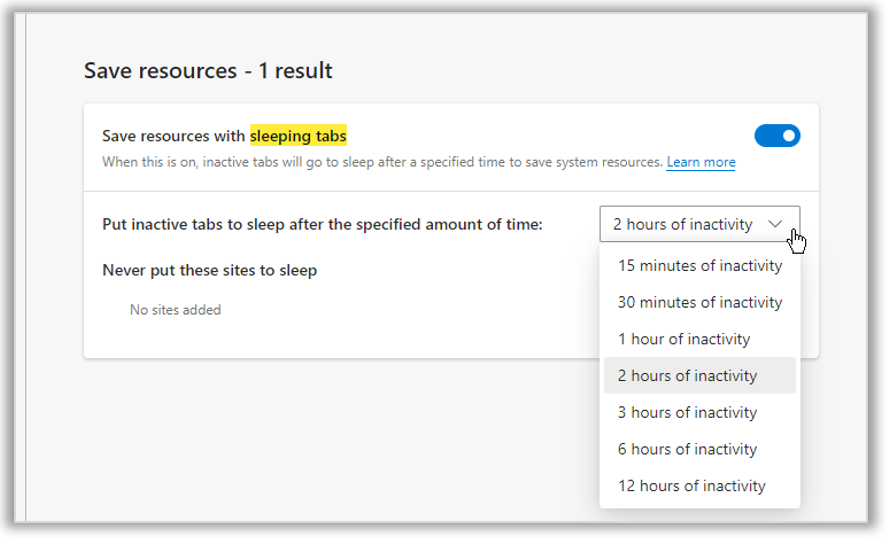
There is also the possible option to add sites, to exclude them from the Sleeping Tabs feature. Just simply add the here.
After you are done with the configuration, all the settings should look like this.
When the activation happens successfully, the following prompt will pop up in Microsoft Edge!
Configure Sleeping tabs via Group Policies
You are likely not going to configure this on a per-user basis, so for Enterprises group policies are available today.
You can find the list of all the supported features via GPOs here.
Group Policy (ADMX) info
- GP unique name: SleepingTabsBlockedForUrls
- GP name: Block Sleeping Tabs on specific sites
- GP path (Mandatory): Administrative Templates/Microsoft Edge/Sleeping Tabs settings
- GP path (Recommended): Administrative Templates/Microsoft Edge – Default Settings (users can override)/Sleeping Tabs settings
- GP ADMX file name: MSEdge.admx
Windows Registry Settings
- Path (Mandatory): SOFTWARE\Policies\Microsoft\Edge\SleepingTabsBlockedForUrls
- Path (Recommended): SOFTWARE\Policies\Microsoft\Edge\Recommended\SleepingTabsBlockedForUrls
- Value Name: 1, 2, 3, …
- Value Type: list of REG_SZ
Say goodbye to struggling with private mode for most use-cases!
For a while, Microsoft Edge offers the capability to create profiles inside the browser with its own “private” settings per profile. Think about an own isolated browser session with personal history, cache, cookies.
This feature allows you to create multiple profiles for different purposes. For example, if you have multiple accounts to demonstrate or must manage multiple customer environments with different credentials. You can simply create another profile and the whole session is isolated from the other one. Say goodbye to the limit of opening only one private mode session, or other browser vendors that you only use for this cause.
You could also use the “Browse as a guest” option to use an isolated session without the profile creation when you prefer not to save it up to your Azure AD credential – online profile storage.
Startup Booster
Startup boost maximizes your computer’s performance by significantly reducing the time it takes to open the browser after a device reboot or reopening the browser. This new feature rolling out this month powers faster browser launches after you reboot your device and when relaunching Microsoft Edge.
With startup boost, startup times of Microsoft Edge improve ranging from 29% to 41%!
You can activate the setting via your Edge settings menu – as shown below – via the new Edge update 89 ADMX template GPOs or the registry key below.
HKEY_LOCAL_MACHINE\SOFTWARE\Policies\Microsoft\Edge
- StartupBoostEnabled
- DWORD 1 = enabled
Read more here: Amp up your performance with Startup boost and find information blazingly fast with Microsoft Edge and Bing | Windows Experience Blog
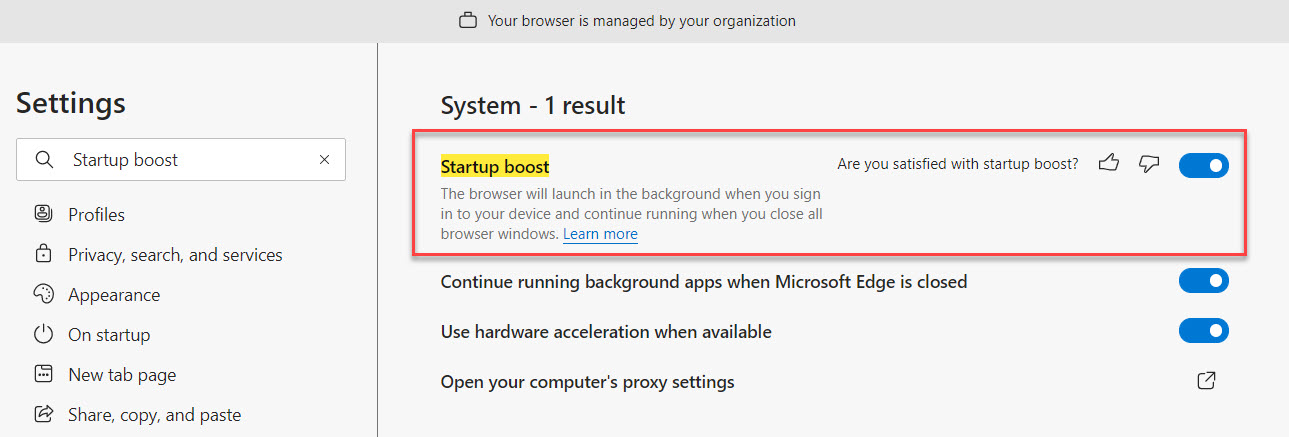
Make sure to use FSLogix Profile Container as a profile solution
Are you using Microsoft Edge (Chromium) on Azure Virtual Desktop (or any other virtual desktop solution)? Make sure to use FSLogix Profile Container as a Profile Management solution as this product is including all the folders/data, including AppData\Local and AppData\Roaming of your Windows profile inside a VHDx – virtual hard drive container.
This makes run Edge best on a non-persistent virtual desktop environment because the specific Edge profile folders are always included, no matter which session host/virtual desktop VM you land on.
The latest FSLogix Apps agent software is available for download here
Note: FSLogix is free to use for almost any existing customer/partner that is using Desktop Virtualization today. Read more about the requirements here / or best practices to deploy FSLogix here.
Want to see all the above in action? Watch this Sleeping Tabs demo!
Experience the outcome of this article, I’m showing you in the demo how the configuration looks in Microsoft Edge. Go check it out below. 😊
Need help? Visit the Sleeping Tabs FAQ
Do you happen to have more questions? Please visit the official Sleeping Tabs FAQ here.






